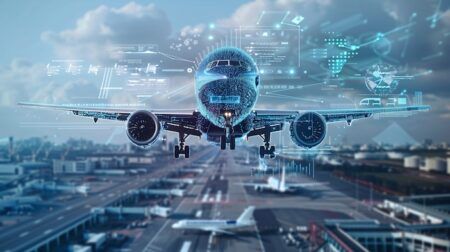The aviation industry is moving from managing the initial, enormous impact of Covid-19, to developing strategies that enable it to survive in the longer term.
In our Market Update webinar, IBA executives presented a range of data and insights that illustrated how airlines and other companies across the aviation eco-system are adapting to a ‘new normal’ of dramatically lower demand and a rapidly changing air travel environment.
Airlines across the globe have slashed costs through measures including capacity reductions, lease restructuring, furloughs, job losses and pay reviews. This has contributed to financial positions that, while remaining loss making, have mainly improved between Q2 and Q3.
Airline performance across the globe has varied considerably, influenced by a range of factors include Covid-19 infection rates, associated travel restrictions, the level of Government support for airlines, the makeup of airline’s individual fleets, fuel prices and the size of domestic networks and markets.
Forward bookings for 2021 are recovering, partially bolstered by greater ease in securing refunds, and the prospect of fast testing at airports also has the potential to deliver higher passenger volumes.
Aircraft utilisation on domestic flights has progressed slowly back to 60% of pre-Covid levels, led by a strong resurgence in the Chinese and Russian markets, according to data from InsightIQ, IBA’s intelligence platform. However, load factors remain depressed and aircraft utilisation on international flights remains at just 28% of pre-Covid levels.
The number of aircraft that IBA has identified as exiting fleets due to airline failures or entering administration has risen to 1,489, but the rate of growth has slowed considerably since July, with only nine airlines entering this position during that time, compared to 32 between February and July 2020.
The average age of aircraft being retired is around 20 years, but there are considerable variations between types. In addition to older aircraft such as the Boeing 747, Boeing 767-300ER and MD 80/90, aircraft at risk now also include younger wide-bodies, in particular the Airbus A380 and A340-600, and the Boeing 777-200LR.
Previous extreme volatility in aircraft values is starting to stabilise, with many younger aircraft types such as the Airbus A350, A320neo family, A330neo and Boeing 787 now displaying just a 10% variance between market and base value. However, older aircraft such as the Boeing 737NG and A320ceo are showing variances of up to 20%.
IBA forecasts a continued downward spiral in values for the A330ceos, with more expected to come off lease in the next few years, while over 120 Boeing 777-300ERs are now subject to fleet exits, making further downgrades in its value likely.
Major cuts in OEM production levels will see deliveries for 2020 running at less than half that of 2019. IBA forecasts that 715 aircraft will be delivered this year, compared to almost 1,500 aircraft in 2019. Airbus will account for 68% of this year’s deliveries, compared to just 19% from Boeing.
The return to service of the Boeing 737 MAX, which IBA forecasts will commence at scale from the second quarter (April to June) of 2021, will be subject to a number of dynamics. Airlines in North America and China account for over half of the approximately 800 aircraft that were grounded in 2019 or have been built but not delivered.
Additionally, the re-certification of the aircraft is unlikely to be global, with the US Federal Aviation Administration (FAA) set to be first, and shortly followed by the European Union Aviation Safety Agency (EASA). However, IBA believes that the Civil Aviation Administration of China (CAAC) is likely to be slower to certify.
The aviation industry remains fraught with challenges from Covid-19, but we are moving beyond its initial impact as airlines and other companies within the eco-system adapt their strategies for at least the medium term, to enable them to survive in this rapidly changing and low-demand environment.





